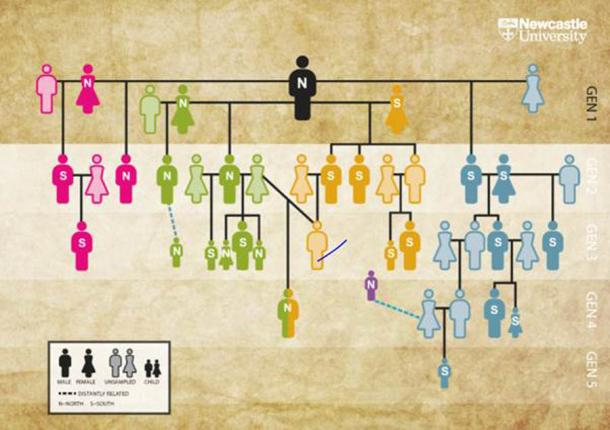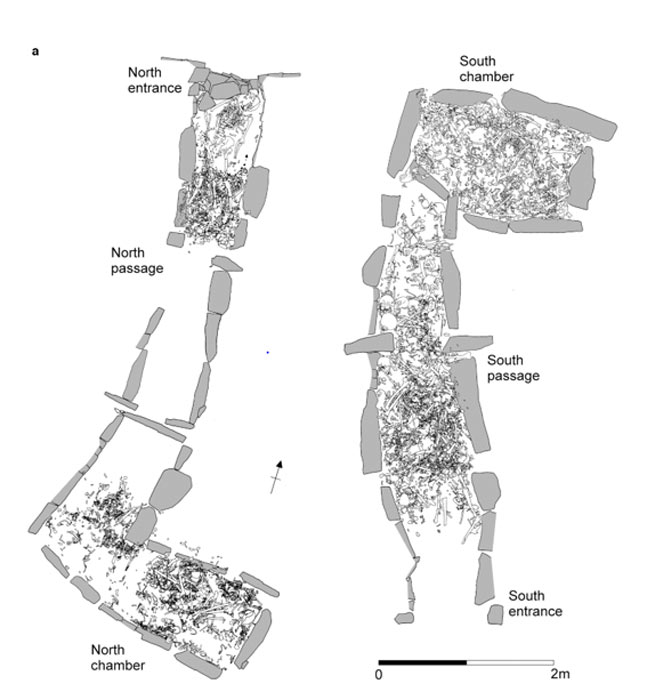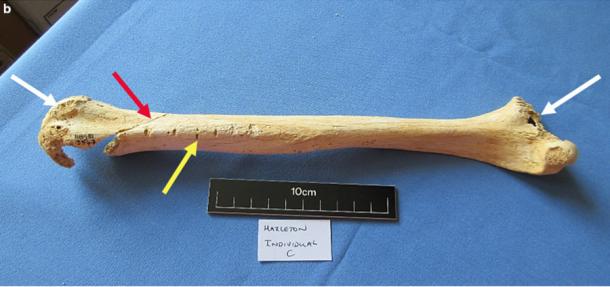Genome sequencing of 35 individuals from the best-preserved Neolithic tomb in B Tomb in England ritain has revealed that 27 of the individuals were the children of 4 women – and just one man! This being so, five generations of a single family are represented, and so the researchers have been able to put together the oldest ever family tree.
The new study published in Nature magazine, of a Neolithic chambered tomb burial in Gloucestershire, southwestern England, has carried out genome sequencing on 35 individuals out of the buried 41 there. Of these 35, 22 were adults, and it has been found that they were buried there over the course of a century during Britain’s Neolithic period, over 5,700 years ago. What has been particularly insightful is that this DNA analysis hints at a possibly polygamous society in which adoption may have occurred, thereby offering new insights into how kinship rules governed this ancient society.
Co-author of the study, Dr Lindsey Büster from the Department of Archaeology at the University of York, said, “This breakthrough study demonstrates the potential of fully integrated cultural and biomolecular approaches to understanding past societies and offers us a glimpse into the ways people who lived and died thousands of years ago articulated their relationships with one another”.

The analysis revealed five continuous generations of a single extended family. (Newcastle University/ Fowler, Olalde et al. )
Analysing the Finds: 27 Biologically Close Relatives!
The time period being explored is roughly 3700-3600 BC, roughly a century after settled agricultural practices had become widespread in Britain. Twenty-seven individuals were from five generations of the same extended family – most of the children were borne by 4 women, who had sexual relations with the same man, hinting at either a possibly polygamous (multiple partner) equation, or serialized monogamy, wherein one person has one partner at any point of time, as reported by The Daily Mail .
From the bones and teeth of these 35 individuals entombed at Hazleton North long cairn in the Cotswolds region, the research team – archaeologists from Newcastle University, UK, and geneticists from the University of the Basque Country, University of Vienna and Harvard University, were able to detect that 27 of them were close biological relatives. The cairn consisted of two L-shaped burial chambers on the north and south of the main spine of the main structure.

The Hazleton North chambered tomb. a) Distribution of human remains in both chambers. The schematics in a are adapted from original figures (© Historic England / Nature)
Patrilineal Descent: Daughters and Stepsons
The research indicates that men were buried with their fathers and brothers, a clear example of patrilineal descent (a common kinship system in which an individual’s family membership derives from and is recorded through their father’s lineage), with later generations being buried at the Neolithic tomb and connected to the first generation through male relatives.
Apart from two of the daughters (who clearly died during childhood) being buried in the tomb, the absence of the remains of adult women suggest that they were buried with their male partners, or outside this burial structure completely, reports University of York .
Dr Chris Fowler of Newcastle University, the first author and lead archaeologist of the study, added:
“This study gives us an unprecedented insight into kinship in a Neolithic community. The tomb at Hazleton North has two separate chambered areas, one accessed via a northern entrance and the other from a southern entrance, and just one extraordinary finding is that initially each of the two halves of the tomb were used to place the remains of the dead from one of two branches of the same family. This is of wider importance because it suggests that the architectural layout of other Neolithic tombs might tell us about how kinship operated at those tombs.”

Right humerus from Individual C of the Hazleton North Neolithic tomb, showing helical fracture (red arrow), tooth marks (yellow arrow) and gnawed proximal and distal ends (white arrows). (Reich et al. Nature)
While the study acknowledges that the right to use the tomb was entirely established through patrilineal ties, the choice of an individual’s burial in either the north or the south chambered area depended on the first-generation woman from whom they descended. Clearly, this points to the fact that first-generation women occupied a significant social and cultural space in the collective memories of the community.
Stepsons were also adopted into this lineage, evidenced by men buried in the Neolithic tomb with their mothers, but no evidence of a biological father, along with mothers with children with a male member of the patriline. After all, there were 8 out of the 35 who did not share biological relatedness with the first-generation male member, even though they shared close spatial proximity with all the others buried in the chamber. This is an interesting take on kinship, as sexual reproduction or parentage were not the only ties to kinship, and there were larger cultural connotations for the this.
Iñigo Olalde of the University of the Basque Country and Ikerbasque, the lead geneticist for the study and co-first author, concludes by saying that, “The excellent DNA preservation at the tomb and the use of the latest technologies in ancient DNA recovery and analysis allowed us to uncover the oldest family tree ever reconstructed and analyse it to understand something profound about the social structure of these ancient groups.”
One limitation of such an exercise is using biological determinations of sex and gender, particularly chromosomal indicators of the X and Y chromosome. The present-day binaries of sex and gender, are therefore being used to determine a pre-historic, ancient practice, pointing to the need to better understand how identities around gender were shaped in these communities.
Top image: Artist’s impression showing what the exterior of the Neolithic tomb cairn at Hazleton North may have looked like. Courtesy of Corinium Museum, copyright Cotswold District Council. Source: Courtesy of Corinium Museum, © Cotswold District Council / Nature
By Sahir Pandey
Views: 0
 RSS Feed
RSS Feed















 December 25th, 2021
December 25th, 2021  Awake Goy
Awake Goy  Posted in
Posted in  Tags:
Tags: 
















